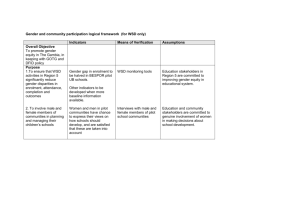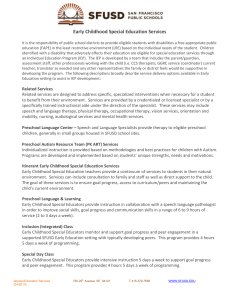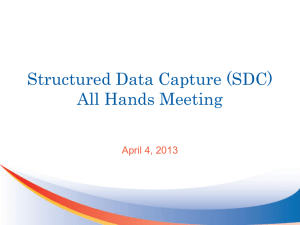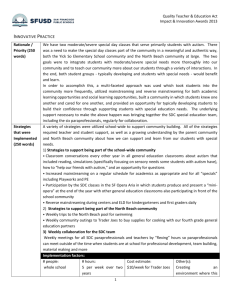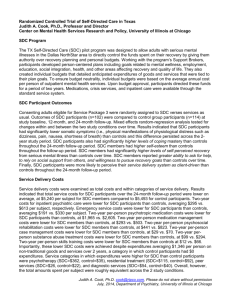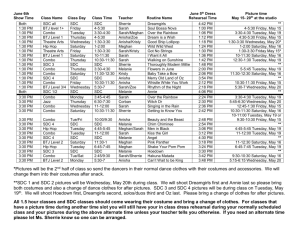SDC Pilot Descriptions and Workflow Summaries UCSF (University
advertisement
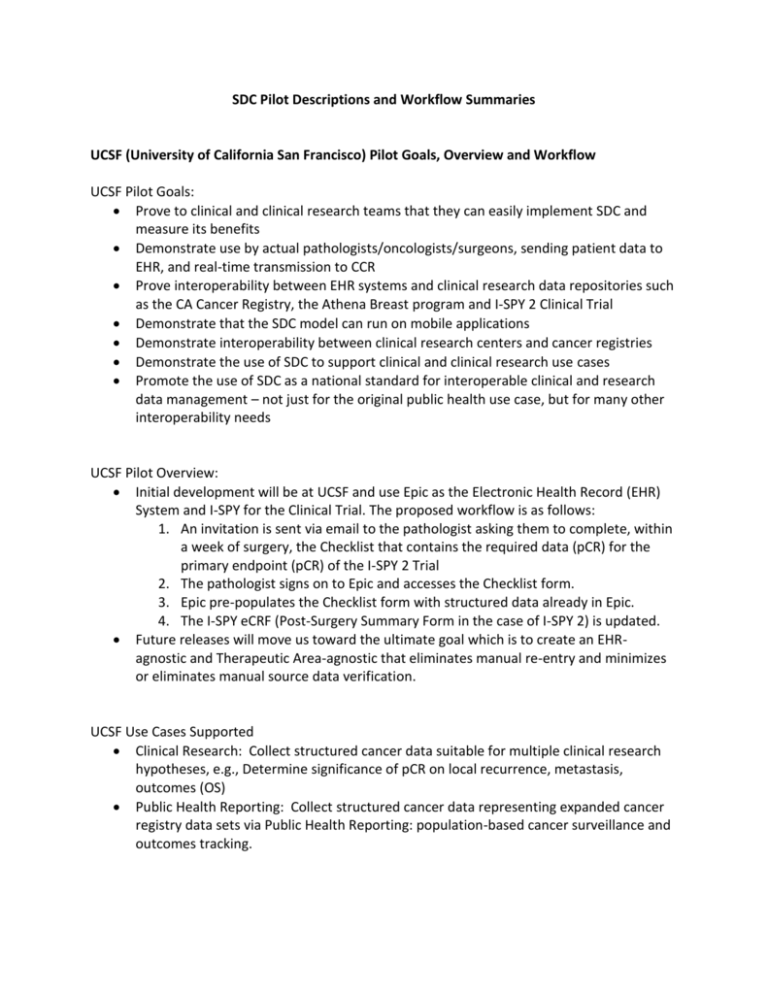
SDC Pilot Descriptions and Workflow Summaries UCSF (University of California San Francisco) Pilot Goals, Overview and Workflow UCSF Pilot Goals: Prove to clinical and clinical research teams that they can easily implement SDC and measure its benefits Demonstrate use by actual pathologists/oncologists/surgeons, sending patient data to EHR, and real-time transmission to CCR Prove interoperability between EHR systems and clinical research data repositories such as the CA Cancer Registry, the Athena Breast program and I-SPY 2 Clinical Trial Demonstrate that the SDC model can run on mobile applications Demonstrate interoperability between clinical research centers and cancer registries Demonstrate the use of SDC to support clinical and clinical research use cases Promote the use of SDC as a national standard for interoperable clinical and research data management – not just for the original public health use case, but for many other interoperability needs UCSF Pilot Overview: Initial development will be at UCSF and use Epic as the Electronic Health Record (EHR) System and I-SPY for the Clinical Trial. The proposed workflow is as follows: 1. An invitation is sent via email to the pathologist asking them to complete, within a week of surgery, the Checklist that contains the required data (pCR) for the primary endpoint (pCR) of the I-SPY 2 Trial 2. The pathologist signs on to Epic and accesses the Checklist form. 3. Epic pre-populates the Checklist form with structured data already in Epic. 4. The I-SPY eCRF (Post-Surgery Summary Form in the case of I-SPY 2) is updated. Future releases will move us toward the ultimate goal which is to create an EHRagnostic and Therapeutic Area-agnostic that eliminates manual re-entry and minimizes or eliminates manual source data verification. UCSF Use Cases Supported Clinical Research: Collect structured cancer data suitable for multiple clinical research hypotheses, e.g., Determine significance of pCR on local recurrence, metastasis, outcomes (OS) Public Health Reporting: Collect structured cancer data representing expanded cancer registry data sets via Public Health Reporting: population-based cancer surveillance and outcomes tracking. UCSF Pilot Planned Workflow CAP (College of American Pathologists) Pilot Goals, Overview and Workflow CAP Pilot Goals Prove to clinical and clinical research teams that they can easily implement SDC and measure its benefits Demonstrate use by actual pathologists/oncologists/surgeons, sending patient data to EHR, and real-time transmission to CCR Prove interoperability between EHR systems and clinical research data repositories such as the CA Cancer Registry, the Athena Breast program and I-SPY 2 Clinical Trial (update: dependant upon UCSF participation) Demonstrate interoperability between clinical research centers and cancer registries Demonstrate the use of SDC to support clinical and clinical research use cases Promote the use of SDC as a national standard for interoperable clinical and research data management – not just for the original public health use case, but for many other interoperability needs CAP Pilot Overview CAP will create selected forms in Phase II SDC XML format, using software-supported SDC design and XML production process. CCR will receive SDC messages using forms x,y,z form each project site (deployable in Eureka system). DCG will demonstrate a working forms manager that all parties can successfully use to request any SDC form in the project. The development of any final production-ready systems; and the collection and analysis of statistically valid data for clinical research, clinical care or public data access are out of scope for this effort. CAP Use Cases Supported Clinical Research: We will collect structured cancer data suitable for multiple clinical research hypotheses, e.g., Determine significance of pCR on local recurrence, metastasis, outcomes (OS) Public Health Reporting: We will collect structured cancer data representing expanded cancer registry data sets via Public Health Reporting: population-based cancer surveillance and outcomes tracking. CAP Workflow

